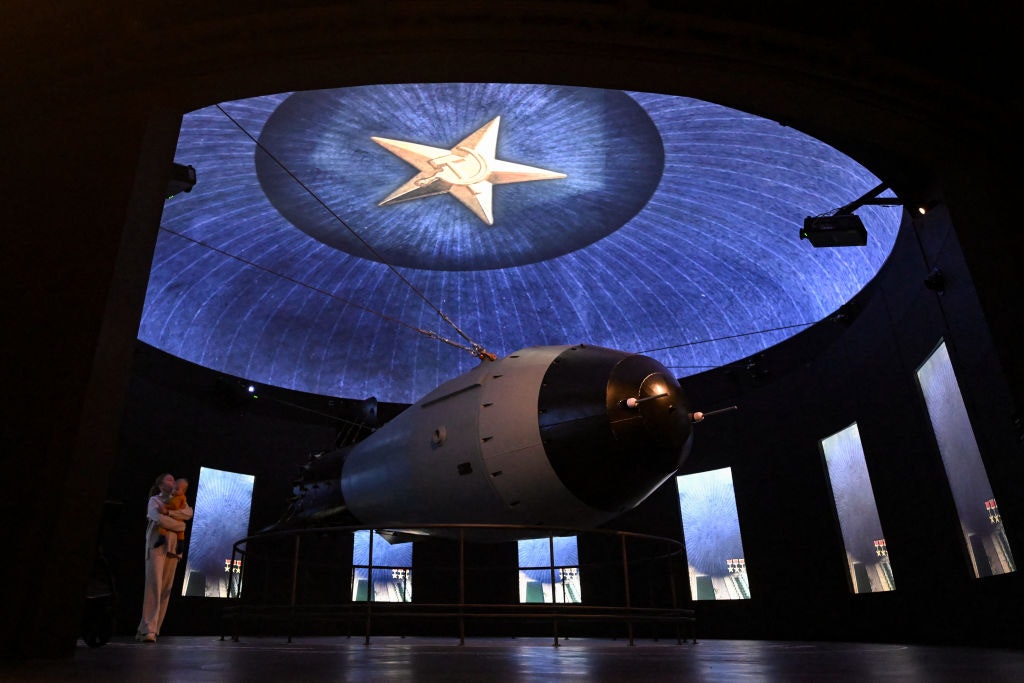War of attrition
The conflict in Ukraine may yet end in stalemate
On 9 May, Russian President Vladimir Putin was in Moscow’s Red Square justifying the invasion of Ukraine as a preemptive move to subvert a fictitious NATO operation against Russia’s “historical lands”. Whether Putin actually believed this is less important than what was occurring 550 miles south, where Russian forces were conducting a weeks-long offensive operation in the Donbas. All indications from the battlefield are that the war in Ukraine could be a long, ugly, violent affair whose ending may be unsatisfactory to all involved. Indeed, Eurasia may be looking at yet another frozen conflict.
Since the 24 February invasion, the United States and its NATO allies have relied on a two-track strategy: buttress Ukraine’s defensive capabilities with a growing assortment of Western-manufactured weaponry in the tens of billions of dollars, and tighten the screws on Russia’s oil and gas-dependent economy to complicate Moscow’s financing of the war. Over time, the thinking goes, Putin will become so exasperated that he either agrees to negotiate a face-saving solution under duress or ends the operation entirely.
Zelensky believes he can vanquish without resorting to concessions
But there’s another scenario that is more plausible: Putin, desperate to snatch a victory from the jaws of defeat, successfully pushes Ukrainian forces out of the Donbas despite the high casualties, consolidates Russian control over the area, and ceases operations until such a time when the Russian army is able to reconstitute itself.
Washington and Europe could then be confronted with a situation that mimics the frozen conflicts of Abkhazia and South Ossetia in Georgia and Transnistria in Moldova, where pro-Russian proxies administer their own territories within the confines of legitimate state borders. A frozen conflict in Ukraine, however, would encompass a much larger Russian troop presence over a larger piece of territory, from Crimea to the region north of Luhansk, and include formal state armies rather than ill-trained separatists.
Despite Moscow and Kyiv’s attempts to settle the war on their own terms, neither appears to possess the military capacity to win the conflict outright. Yet both sides are still far from the point where serious negotiations on core security interests are realistic. Putin and Zelensky have clashing interpretations of what is happening on the ground, highly divergent opinions on what an acceptable end-state looks like, and which party is the aggressor.
Fuelled by a steady flow of U.S. and European weaponry and coming off a string of highly-publicized successes on the battlefield, Zelensky believes he has the time, space and flexibility to vanquish the Russian invaders without resorting to concessions. From Kyiv’s vantage point, conceding to Russia on any of its concerns is not only unnecessary but an insult to the Ukrainian army’s hard-fought efforts. On 6 May, Zelensky stated that his government wouldn’t enter into serious peace talks unless Russia withdrew its troops back to pre-war borders — hardly a sign the Ukrainian leader is desperate for an end to the war.
The pieces are in place for a long conflict with no resolution
Putin has his own reasons for avoiding talks. After suffering a string of embarrassing incidents (like troops sabotaging their own vehicles) and visible defeats in and around Kyiv, Chernihiv and Kharkiv at a cost of thousands of Russian casualties, the last thing Putin wants to do is admit his war of choice was a mistake. Green-lighting a negotiation beyond daily video-chats about civilian evacuation routes, however, would provide exactly that message, signalling to the Ukrainians that Russia is not only in a floundering state of disrepair but desperate to find an exit-ramp from a self-induced quagmire. Instead, the Russians re-oriented their military campaign plan, focused attention on the one section of Ukrainian territory where Russian troops have the most experience fighting, and lowered their objectives to a more realistic level.
The pieces are in place for a long conflict with no resolution — two national leaders who firmly believe they are in the middle of an existential contest; a battlefield encouraging both the winning and losing sides to bet on more escalation; and a unique combatant in Putin who has tied his entire legacy to the war. It’s no wonder why senior U.S. officials are warning of a consequential war with no definitive outcome. “I do think this is a very protracted conflict, and I think it’s measured in years,” Chairman of the Joint Chiefs Gen. Mark Milley told the House Armed Services Committee on 5 April. More than one European official agrees with Milley’s assessment, predicting that the war in Ukraine will eventually result in a stalemate with relatively static front-lines.
Washington has relied on a common playbook to address similar situations: condemn separatist rebellions for violating a state’s internationally-recognized borders, stand with the country whose sovereignty has been violated, and advocate for a peaceful resolution of disputes. While the playbook has failed to resolve any of these frozen conflicts (Moldova has yet to reconcile with the self-declared Transnistria thirty years later), it has succeeded in keeping them frozen. Performing a similar feat in Ukraine could prove a more difficult undertaking, pitting two adversarial armies against one another for years.
Keeping the violence bottled up will entail considerable diplomatic skill, significant assistance from its European partners, and most critically cooperation from the belligerents, who will be inclined to test the resolve of the other side whenever the opportunity presents itself. But as treacherous as the job would be, it would beat the alternative of a hotter war with more casualties, a bigger refugee crisis and a higher risk of escalation.
Daniel R. DePetris is a fellow at Defense Priorities and a foreign affairs columnist for Newsweek.
Enjoying The Critic online? It's even better in print
Try five issues of Britain’s most civilised magazine for £10
Subscribe














